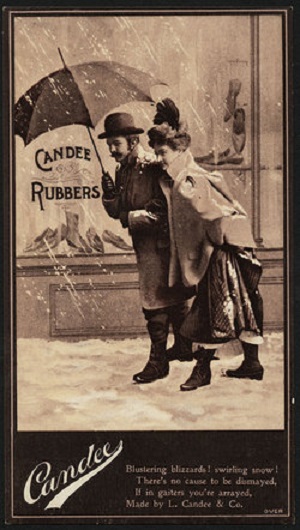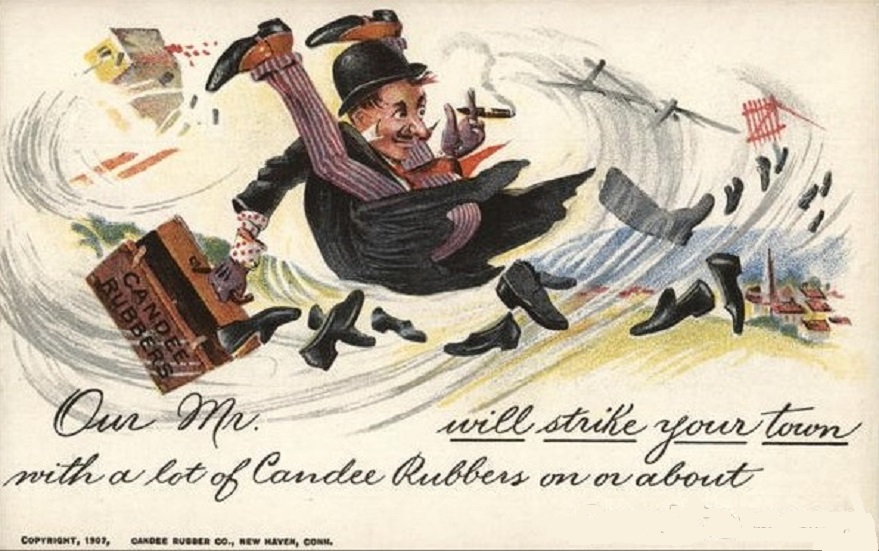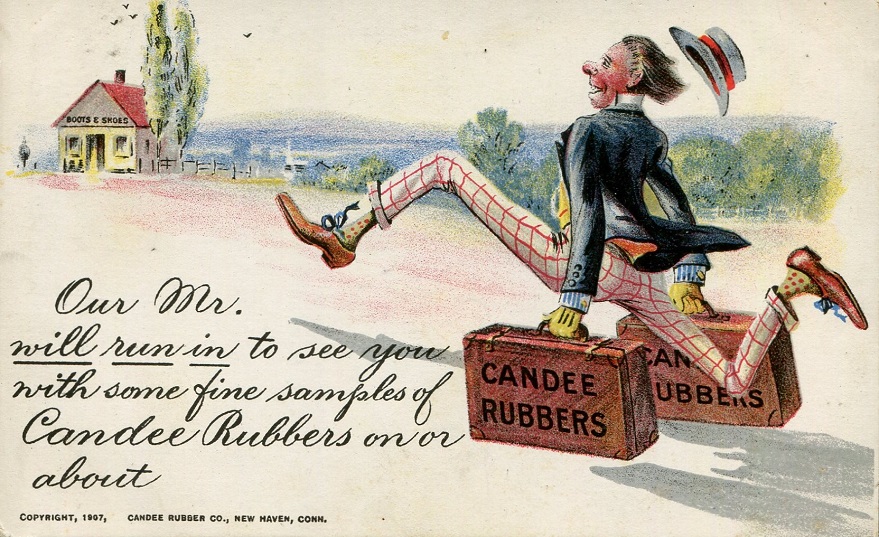George “Burt” Martin
Candee Rubber Company
Leverett Candee (1795 – 1865) was born, raised, educated, married (October 24, 1829), sired one son who grew up to be mayor of Hartford, did business, paid taxes, died at age 70, and was buried in Connecticut. And to the surprise of almost no one, he and his company figured heavily in the August 17, 1858, celebration in New Haven honoring the completion of the Atlantic Cable.
The Population Schedules in the 1830 Federal Census of the United States are extremely difficult to use; even when the work of deciphering nearly two-hundred-year-old penmanship is done and you are researching digital copies. With that, the report recounts that the Candee family of Watertown, Connecticut, consisted of three males and three females. The head of the family – Job Candee was the only one listed by name.
[It was later learned, the other two males were Leverett and his older brother, Horace. Horace’s greatest accomplishment were his nine children, unfortunately only four lived into adulthood.]

Other public records and newspaper accounts tell that in 1843, Leverett Candee began the manufacture of elastic suspenders and rubber shoes along the Mill River at Centerville, Connecticut, making him the first person in the world to manufacture rubber footwear. Those first overshoes were crude and needed much refining and during Candee’s early years of manufacturing, he accepted the task with great enthusiasm and happily succeeded. Candee improved the market for his rubber footwear and by the late 1840s his firm was making a quality product that was available across the country.
The incorporation of the L. Candee Company came in 1852 as “Candee & Company” which consisted of four partners: Henry and Lucius Hotchkiss, Timothy Lester, with Candee as president.
Candee used the Goodyear rubber patten which he had obtained from Charles Goodyear himself. It was the first license to use the Goodyear patent for making rubber shoes. Whether this association was from true friendship or industrial chicanery is unknown, but it is a matter of fact that Goodyear spent days and weeks at a time in Mr. Candee’s factory supervising the use of his patent.
As the business grew it was soon realized that even after several additions to the facilities the factory needed to move to a larger site. A good one was found in New Haven.
Aside: In May 1863, the Internal Revenue Service had been in operation for only ten months. In one of their first attempts to collect taxes the agency issued lists of persons from whom tax payments were expected. (Even then it was said that paying tax was voluntary, so these lists were published to indicate who it was that would volunteer.)
One such list concerned the residents in the Second Collection District of the State of Connecticut who owed taxes Ad Valorem on goods [being imported] and subject to the Excise Laws of the United States. This was not a delinquency list; it was a slate of tariffs due. Nevertheless, Leverett Candee found his name on one of the IRS tax assessment lists in the amount of $189.19, which was a 3% excise tax.
Leverett Candee died in November 1865 but the business thrived under new leadership from the partners and Candee’s son Charles. In 1869 the move to New Haven had been completed and it was from there that Candee and Company continued making rubber products even after the 1892 merger when Candee and eight other companies merged to form the U.S. Rubber Company based in Naugatuck.
The Candee Company grew to be the largest manufacturer of rubber shoes in the country and worldwide. At the height of their manufacturing capacity the daily unit (one-pair) count reached 30,000. That’s a lot of galoshes, also known as dickersons, gumshoes, rubbers, or overshoes.
No specific date could be found, but it is believed that circa 1905, it was decided that a dedicated salesforce would be formed and supplied with miniature samples. “Calling On You Soon” postcards were designed, created, and copyrighted in 1907 by the inhouse art department.




Today the cards are rare, highly collectible, and just a little-bit goofy.
You’re right – never heard of them, but interesting article!
U.S. Rubber later became known as U.S. Royal, and eventually Uniroyal. The Keds brand was adopted for the company’s footwear line in 1916.
I remember using galoshes/rubbers in the ’60’s-’70’s. They seemed to disappear with the wearing of hats & the carrying of umbrellas too. ❤️
Ginny & George were right – never heard of the company, but still today I still in the winter if needed wear rubbers, overshoes, galoshes, so thanks for the article.
My GG grandfather worked for them as an Inspector and a Boiler Operator.